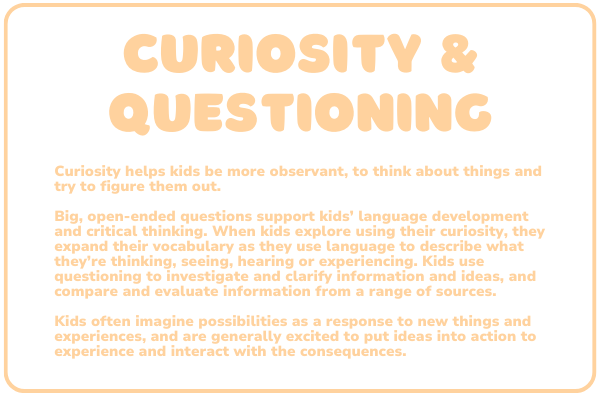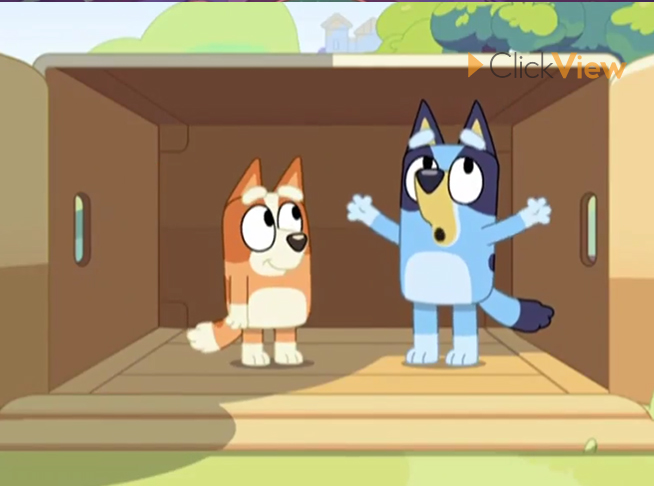Lesson summary
The animated series Bluey serves as a valuable tool in fostering children's development of imagination, curiosity, and social and emotional learning.
This lesson focuses on the capability of curiosity and questioning. Students investigate the physical properties of everyday objects before exploring the creative possibilities and diversity of uses of these objects, and using these common objects as extraordinary props in socio-dramatic play.
This suite of resources supports emotional and social learning and oral language development through a values framework. Each lesson uses intentional teaching strategies to develop a specific value. This lesson focuses on:

Click here for a full list of the values that underpin these lessons.
This lesson showcases a Bluey episode, which can be viewed on ClickView. Don't have a ClickView subscription? Bluey is also available on ABC iView. For real life!
Learning intentions
Students will:
- explore the properties of everyday objects
- investigate different uses for recyclable materials.
Success criteria
Students can:
- describe and compare the properties, colour, size, shape and material of everyday objects
- design and create something new from recyclable materials
- participate in dramatic play.
Lesson guides and printables
Curriculum links
Select your curriculum from the options below.
Lesson details
Curriculum Mapping
Australian Curriculum (v9.0) content description:
Foundation Year Drama
- use play, imagination, arts knowledge, processes and/or skills to discover possibilities and develop ideas (AC9ADRFD01)
Years 1 & 2 Drama
- use the elements of drama and imagination in dramatic play and/or process drama (AC9ADR2D01)
Syllabus outcomes:
General capabilities: Personal and Social Capability, Critical and Creative Thinking
Cross-curriculum Priorities: Sustainability
Relevant parts of Foundation Year Drama achievement standards: Students use play, imagination, arts knowledge, processes and/or skills to create and share arts works in different forms.
Relevant parts of Years 1 & 2 Drama achievement standards: Students demonstrate arts practices and skills across arts subjects.
Level of teacher scaffolding: Medium – Facilitate discussion, oversee purposeful play, some preparation required.
Resources Required
A collection of household waste items, chiefly recyclables and safe materials, in different shapes and sizes. Consider items such as:
- cardboard packaging such as boxes of various sizes, empty toilet or paper towel rolls
- classroom objects in a variety of sizes: dusters, rulers, blocks
- craft off-cuts: cloth, ribbon, modelling clay
- packaging material: bubble wrap, cardboard spacers, polystyrene
- plastic recyclables: empty containers, bottle lids
- device capable of presenting a video to the class
- large cardboard boxes – one per group
- whiteboard.
Additional Info
This is not an official Bluey lesson. Cool.org does not have an official partnership with Bluey.


Welcome back!
Don't have an account yet?
Log in with:
Create your free Cool.org account.
Many of our resources are free, with an option to upgrade to Cool+ for premium content.
Already have an account?
Sign up with:
By signing up you accept Cool.org's Terms and Conditions(Opens in new tab) and Privacy Policy(Opens in new tab).